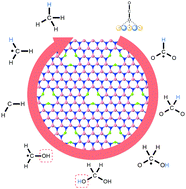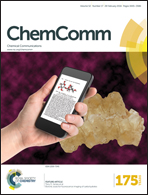An intensified π-hole in beryllium-doped boron nitride meshes: its determinant role in CO2 conversion into hydrocarbon fuels†
Abstract
DFT investigations on beryllium-doped boron nitride meshes or sheets (BNs) predict the existence of a very reactive kind of novel material capable of spontaneously reducing the first hydrogenation step in the CO2 conversion mechanism. This impressive behaviour appears as a result of the very deep π-hole generated by the beryllium moieties, and also determines its selectivity towards the production of CH4.


 Please wait while we load your content...
Please wait while we load your content...